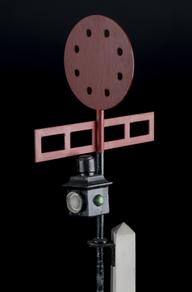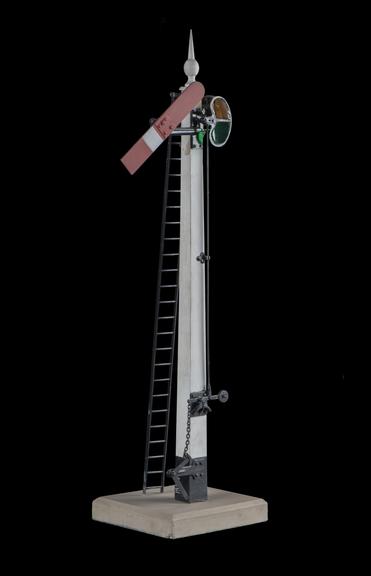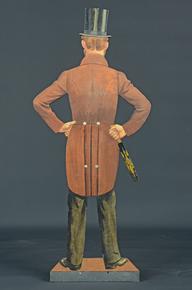

Model Great Northern Railway Centre-pivot Semaphore Signal
- Made:
- c.1912 in Science Museum
- maker:
- Science Museum




Model signal, scale 1:16, Great Northern Railway, Centre-pivot Semaphore signal, made c.1912.
By the 1870s, the semaphore signal had emerged as the standard form of fixed lineside signalling on Britain’s railways. Nevertheless, the development of failsafe operating methods was still in progress.
Like other railways of the period, signallers on the Great Northern Railway (GNR) had adopted the practice of leaving signals in the ‘clear’ position unless there was an obstruction on the line. The arms of the lower-quadrant semaphore signals used by the company disappeared into the post when displaying a ‘line clear’ aspect. The weight of snow and ice could jam the signal at ‘line clear’, even when the signaller set the signal at ‘danger’ at the signal box.
These circumstances caused an accident on 21 January 1876, when a signal showing a false ‘line clear’ at Holme on the GNR’s Main Line was passed by a late-running goods train that needed to be shunted out of the way of a following express train. The express ran into the goods train while it was being shunted at Abbots Ripton, and a third train travelling from the opposite direction collided with the wreckage; there were 13 fatalities in total.
The findings of the inquiry noted the signal design needed improvement, and the GNR adopted a centre-pivot, ‘somersault’ semaphore signal that gave a positive indication of safety to train crews. The signal arm was mounted on a bracket to the side of the post, with the lower quadrant ‘line clear’ aspect fully visible. As an extra safety measure, the action of the signal arm and lamp was separated, as the model shows. Several other railways would use a similar design.
Of greater significance, the accident at Abbots Ripton prompted an industry-wide change in operating practice, with ‘danger’ becoming the default signal aspect.
Details
- Category:
- Railway Models
- Object Number:
- 1912-76
- Materials:
- metal (unknown), wood (unidentified) and paint
- Measurements:
-
overall: 395 mm x 100 mm x 100 mm,
- type:
- model




